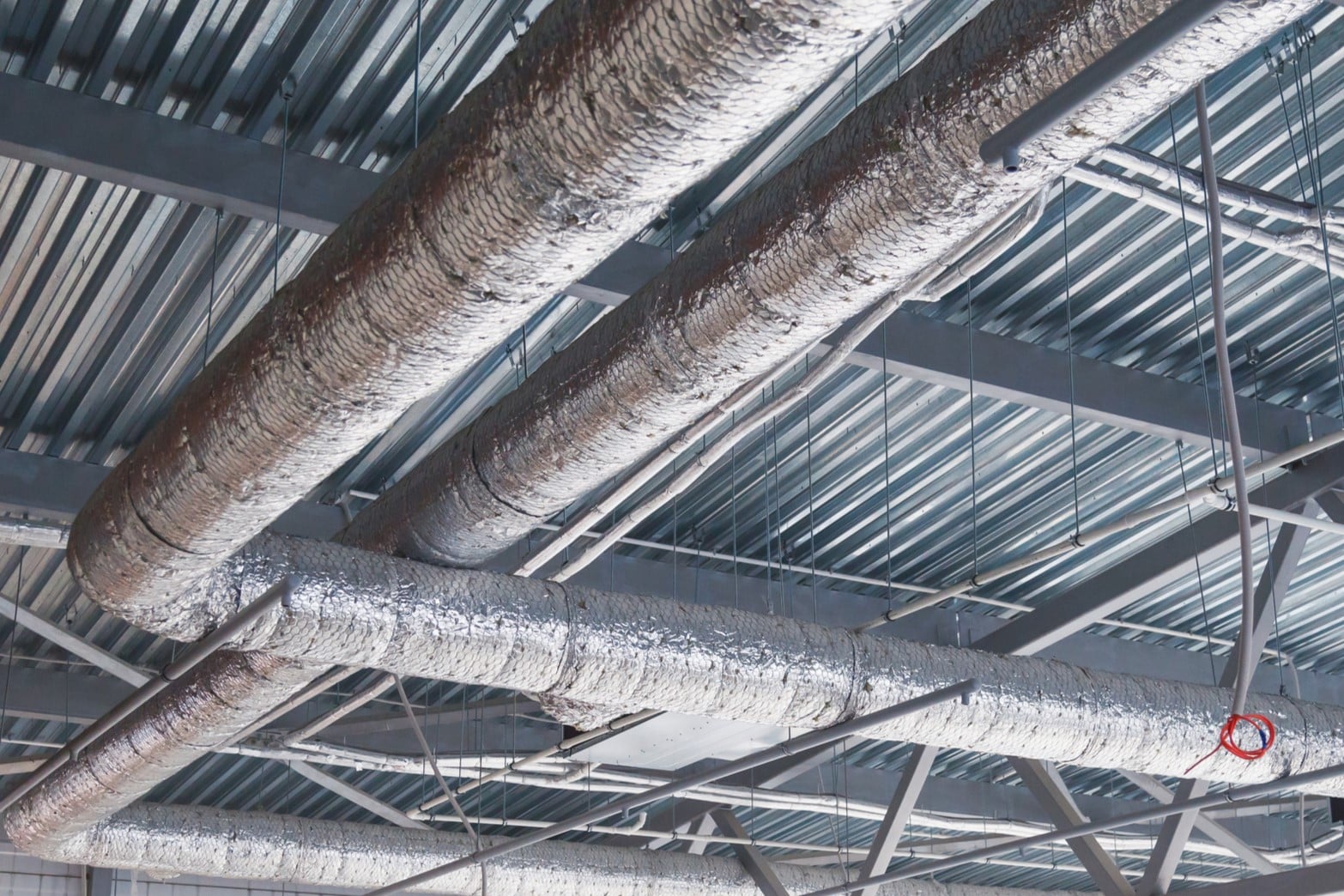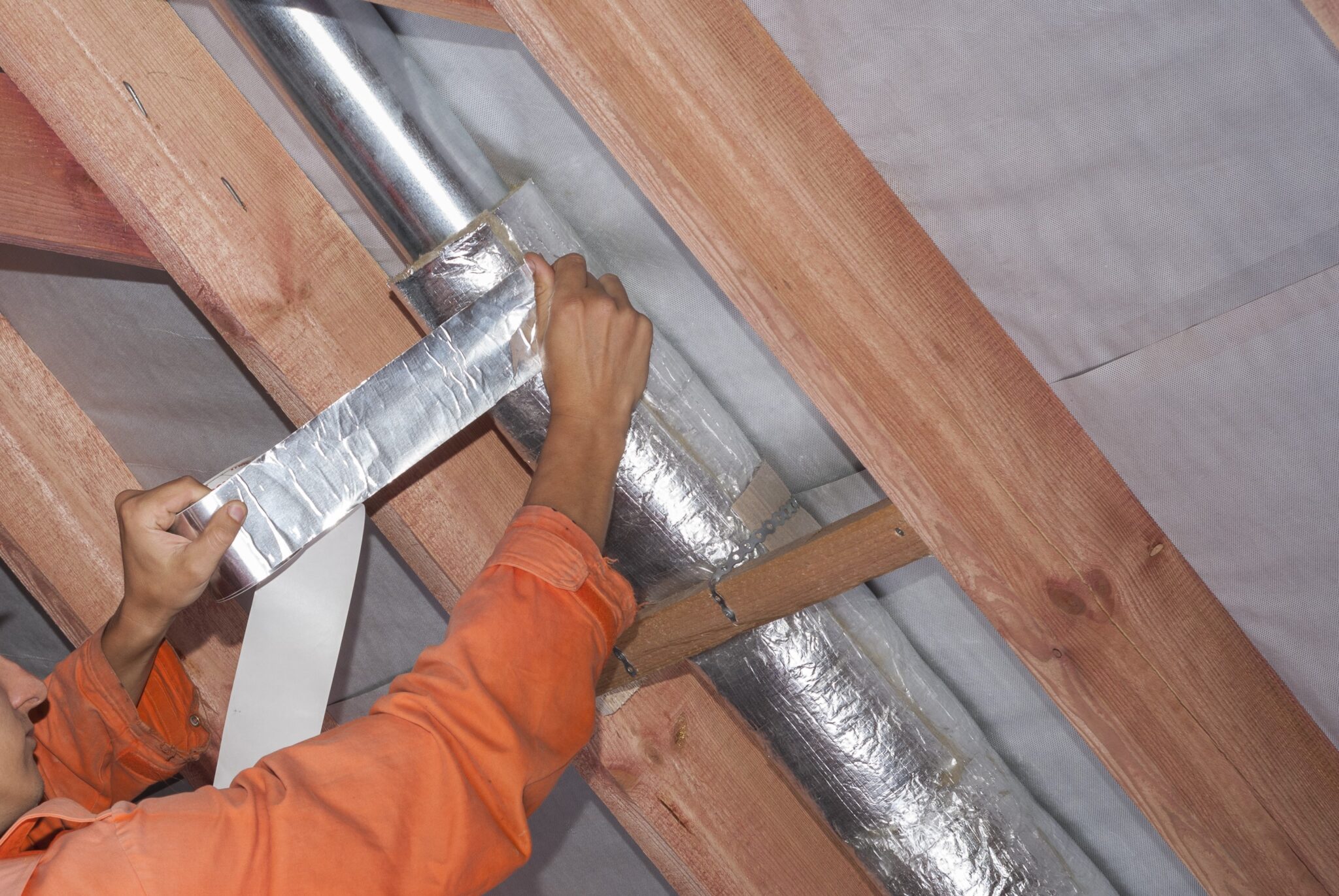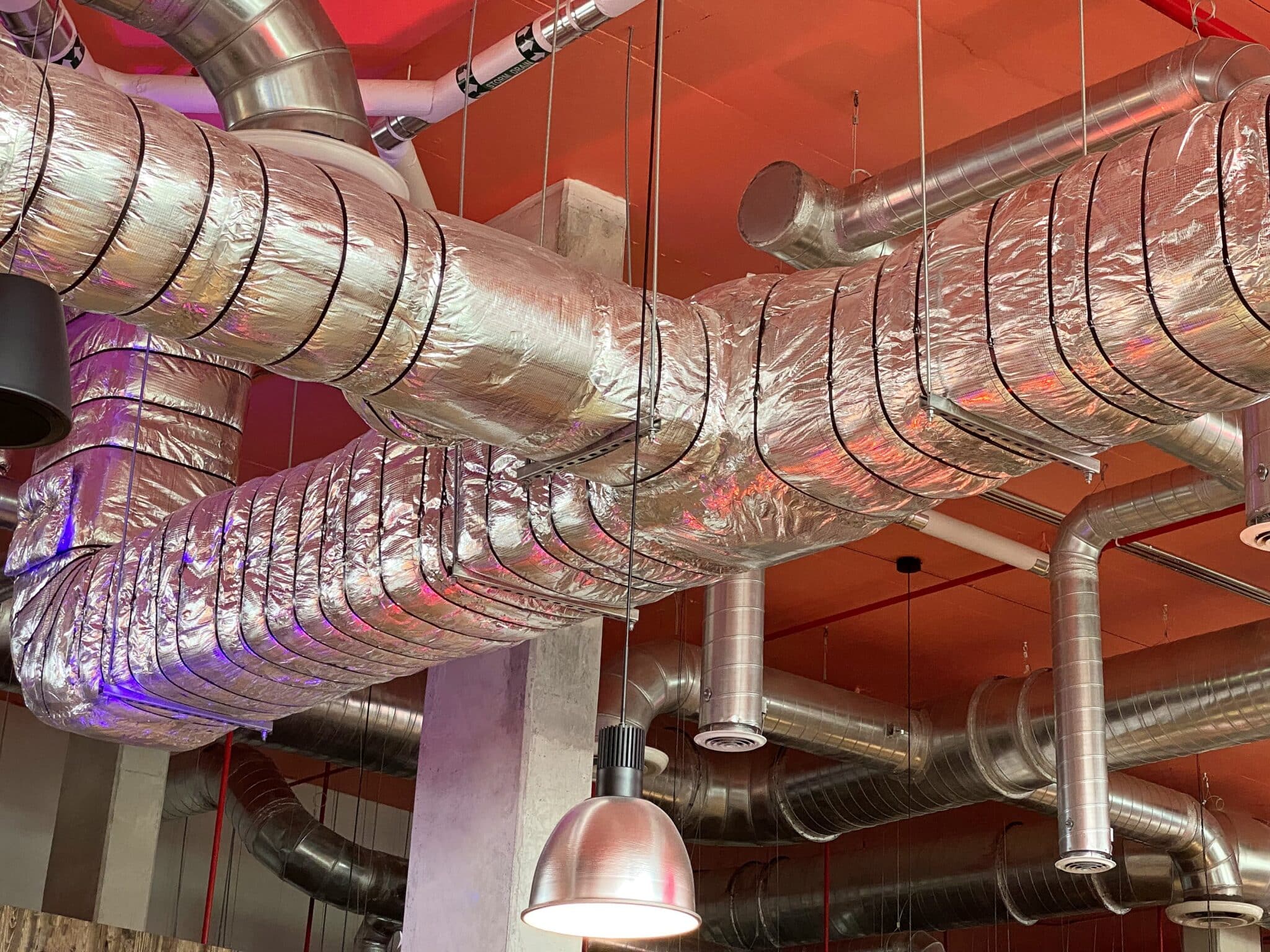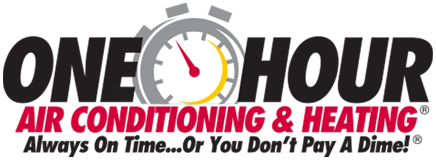Tired of dealing with uneven temperatures in your home or sky-high energy bills? It might be time to consider duct insulation.
In this blog, we’ll dive into what duct insulation is, how it works, and why it’s so important for maintaining a comfortable and energy-efficient home.
Whether you’re in Cockeysville, MD, Timonium, MD, or Pikesville, MD, this guide has got you covered.
What is Duct Insulation?
Duct insulation is like a cozy blanket for the ductwork in your home. It helps to keep the air that flows through your heating and cooling system at the right temperature.
Without proper insulation, your HVAC system has to work much harder to maintain the desired temperature, leading to higher energy consumption and costs.
Duct insulation wraps your ducts with special materials that help to prevent heat loss or gain. This means that in winter, the warm air stays warm, and in summer, the cool air stays cool as it travels through the ducts to your living spaces.
It’s a simple yet effective way to make sure your home stays comfortable all year round without overworking your HVAC system. Insulating your ducts can also help to reduce noise, making your home quieter and more peaceful.
By insulating your ducts, you can improve the efficiency of your heating and cooling system. This not only helps keep your home comfortable but can also save you money on your energy bills. The improved efficiency means your HVAC system uses less energy, which translates to lower utility costs.

How Duct Insulation Works
It’s pretty straightforward but incredibly effective. Duct insulation involves wrapping your home’s ductwork with insulating materials to keep the air inside at a consistent temperature.
This means that whether your HVAC system is heating or cooling, the air retains its intended temperature as it travels through the ducts to your rooms.
The insulation material acts as a barrier, reducing heat exchange between the air inside the ducts and the surrounding environment. During the winter, it prevents warm air from losing heat to the cold attic or basement.
In the summer, it keeps the cool air from absorbing heat before it reaches your living spaces. This not only helps maintain a comfortable indoor temperature but also ensures that your HVAC system doesn’t have to work overtime to compensate for lost heat or cooling.
Types of Duct Insulation Materials
Fiberglass Insulation
Fiberglass insulation is one of the most popular choices for duct insulation. It’s made of fine glass fibers and usually comes in the form of batts or blankets. This material is great at reducing heat loss and gain, and it also helps with noise reduction, making your home quieter.
Fiberglass is fire-resistant and relatively inexpensive, making it a cost-effective option for many homeowners.
Additionally, it is easy to install and can be found at most home improvement stores. For those looking for a balance of cost and effectiveness, fiberglass is often the go-to choice.
Foam Insulation
Foam insulation, particularly spray foam, is another excellent choice for ductwork. This type of insulation expands to fill gaps and cracks, ensuring a tight seal around your ducts.
Foam insulation provides superior thermal resistance and can also help reduce air leaks, which improves the overall efficiency of your HVAC system. It’s especially useful for irregularly shaped or hard-to-reach ducts.
There are two main types of foam insulation: open-cell and closed-cell. Open-cell foam is lighter and more flexible, while closed-cell foam is denser and provides a higher R-value, making it more effective at preventing heat transfer.
Reflective Insulation
Reflective insulation, also known as radiant barrier insulation, uses reflective surfaces like aluminum foil to reflect heat away from the ducts. This type of insulation is particularly effective in hot climates as it helps to keep the ductwork cooler by reflecting radiant heat.
It’s often used in combination with other types of insulation to maximize efficiency. Reflective insulation can be installed as a wrap around the ducts or as a lining within the duct system. It’s lightweight and easy to handle, making it a versatile option for various ductwork configurations.
Common Problems with Uninsulated Ducts
Energy Loss
One of the most significant problems with uninsulated ducts is energy loss. Without insulation, the air traveling through your ducts can lose a lot of its heat or cooling, especially if the ducts pass through unconditioned spaces like attics or basements.
This means your HVAC system has to work harder to maintain the desired temperature in your home, leading to increased energy consumption and higher bills. Over time, this energy loss can add up, making your home less energy-efficient and more expensive to heat and cool.
Uneven Heating and Cooling
Uninsulated ducts can cause uneven heating and cooling throughout your home. You might notice that some rooms are too hot while others are too cold.
This is because the air temperature can change as it travels through the uninsulated ducts, leading to inconsistencies in how your home is heated or cooled.
These temperature differences can be particularly frustrating during extreme weather conditions, making some areas of your home uncomfortable to live in.
Increased Wear on HVAC Systems
When your HVAC system has to work harder to compensate for the energy loss through uninsulated ducts, it puts more strain on the equipment. This can lead to increased wear and tear, which may shorten the lifespan of your HVAC system.
More frequent repairs and the need for early replacement can be costly and inconvenient. Additionally, an overworked HVAC system can be less reliable, potentially breaking down when you need it most.
Poor Indoor Air Quality
Uninsulated ducts can also contribute to poor indoor air quality. Without proper insulation, ducts can become a breeding ground for mold, dust, and other allergens.
These contaminants can then circulate throughout your home, potentially causing health issues for you and your family.
Insulating your ducts helps to create a cleaner, healthier indoor environment by preventing these pollutants from entering your living spaces and improving the overall air quality in your home.
How to Identify if Your Ducts Need Insulation
Signs of Poor Insulation
There are several telltale signs that your ducts might not be properly insulated:
- High Energy Bills: If you notice a sudden increase in your energy bills, it could be due to energy loss through uninsulated ducts.
- Uneven Temperatures: Rooms that are significantly warmer or cooler than others suggest poor insulation.
- Visible Gaps or Damages: Inspect your ductwork for visible gaps, cracks, or areas where the insulation is missing or damaged.
DIY Inspection Tips
Conducting a simple inspection of your ducts can help you identify any insulation issues:
- Check for Temperature Differences: Feel the surface of your ducts in different areas. If some sections are noticeably warmer or cooler than others, this could indicate poor insulation.
- Look for Condensation: Condensation on the ducts can be a sign of poor insulation, as it indicates that warm air is coming into contact with cold surfaces.
- Listen for Air Leaks: Listen closely for any whistling or hissing sounds, which can indicate air leaks in your ductwork.
When to Call a Professional
While a DIY inspection can give you some insights, there are times when it’s best to call in a professional:
- Persistent High Energy Bills: If your energy bills remain high despite your efforts, a professional can perform a more thorough inspection and suggest solutions.
- Complex Duct Systems: If your duct system is extensive or difficult to access, a professional will have the tools and expertise to evaluate it properly.
- Visible Damage: Significant damage to your ductwork should be assessed and repaired by a professional to ensure it’s done correctly.
Steps to Insulate Your Ducts
Preparing for Insulation
Before you start insulating your ducts, it’s important to prepare properly:
- Gather Materials: Make sure you have all the necessary materials, including insulation, adhesive, tape, and protective gear.
- Clean the Ducts: Dust and debris can interfere with the insulation process. Clean the ducts thoroughly to ensure a smooth application.
- Inspect for Damage: Check your ducts for any damage or leaks that need to be repaired before insulating. Fix any issues to ensure the insulation will be effective.
Choosing the Right Insulation Material
Selecting the right insulation material is crucial for the effectiveness of the insulation:
- Fiberglass Insulation: Ideal for straight sections of ductwork. It’s easy to install and provides good thermal resistance.
- Foam Insulation: Perfect for irregular shapes and tight spaces. Spray foam can expand to fill gaps, providing an airtight seal.
- Reflective Insulation: Best for hot climates, as it reflects radiant heat away from the ducts.
Step-by-Step Guide to Insulating Ducts
Follow these steps to insulate your ducts properly:
- Measure the Ducts: Measure the length and circumference of your ductwork to determine how much insulation you’ll need.
- Cut the Insulation: Cut the insulation material to the appropriate size. Ensure it will cover the ducts completely without leaving any gaps.
- Wrap the Ducts: Carefully wrap the insulation around the ducts. Use adhesive and tape to secure it in place, ensuring there are no gaps or exposed areas.
- Seal the Edges: Use foil tape to seal the edges of the insulation. This helps to create a tight seal and prevent air leaks.
- Check for Gaps: After the insulation is applied, check for any gaps or areas that might need additional coverage. Seal any remaining gaps to ensure maximum efficiency.
By following these steps, you can effectively insulate your ducts, improving your home’s energy efficiency and overall comfort.

Professional Duct Insulation Services
Benefits of Hiring a Professional
Hiring a professional to insulate your ducts comes with several advantages. First, professionals have the expertise and experience to ensure the job is done correctly and efficiently.
They also use proper equipment, including specialized tools and materials that may not be readily available to homeowners, ensuring a high-quality insulation job.
Additionally, professionals can complete the work much faster than a DIY approach, minimizing disruption to your home.
Moreover, a professional will conduct a comprehensive assessment of your duct system, identifying any issues and providing solutions that a DIYer might miss.
What to Expect from a Professional Service
When you hire a professional for duct insulation, the process typically begins with an initial consultation. The professional will assess your home and ductwork, discuss your needs, and provide an estimate.
Next, they will inspect your ducts for any damage or leaks and repair them as needed to ensure the insulation will be effective.
During the installation phase, the insulation material will be carefully applied to all accessible ducts. This includes sealing any gaps and ensuring a tight fit around the ductwork.
Maintenance and Care for Insulated Ducts
Regular Inspection Tips
Regular inspections are crucial to maintaining the effectiveness of your duct insulation. Here are some key points to keep in mind:
- Annual Checkups: Inspect your ductwork at least once a year for any signs of wear and tear.
- Look for Gaps and Tears: Check for any gaps, tears, or areas where the insulation has become loose.
- Moisture and Condensation: Inspect for any signs of moisture or condensation, as these can indicate leaks or inadequate insulation.
- Early Detection: Catching these issues early can prevent bigger problems down the line and keep your HVAC system running efficiently.
Regular inspections and maintenance can significantly extend the life of your duct insulation and ensure your HVAC system operates efficiently year-round.
How to Maintain Insulated Ducts
Maintaining your insulated ducts is relatively simple but important. If you notice any gaps or damaged areas, seal them with foil tape or additional insulation material to ensure a tight seal.
Keeping your ducts clean is also vital; dust and debris can accumulate and reduce the efficiency of your system. Consider having your ducts professionally cleaned every few years to maintain optimal airflow and indoor air quality.
Regularly changing your HVAC filters can also help reduce the amount of dust and debris that enters your duct system, further enhancing the performance of your insulation.
Troubleshooting Common Issues
Even with proper maintenance, issues can arise with your duct insulation. Common problems include air leaks, insulation degradation, and condensation. If you encounter air leaks, seal them immediately to prevent energy loss and maintain system efficiency.
For insulation degradation, replacing the worn sections with new insulation material is the best solution to ensure continued performance.
Condensation issues may indicate a more significant problem, such as poor ventilation or excessive humidity, which needs to be addressed to prevent further damage to your ductwork and insulation.
Ready to Boost Your Home’s Efficiency?
Don’t let poor duct insulation waste your energy and money. At One Hour Heating & Air Conditioning of Cockeysville, we specialize in top-notch duct insulation services tailored to your needs. Serving Cockeysville, MD, Timonium, MD, and Pikesville, MD, our expert team ensures your home stays comfortable year-round.
Contact us today to schedule a consultation and start saving on your energy bills. Let us help you create a more efficient and comfortable living environment with our professional duct insulation solutions.
Frequently Asked Questions (FAQ)
How much can I save on energy bills with duct insulation?
Properly insulating your ducts can lead to significant energy savings, typically reducing your heating and cooling costs by 20-30%. The exact amount depends on factors like the size of your home, the efficiency of your HVAC system, and the extent of your ductwork.
What is the best type of insulation for ducts?
Fiberglass insulation is cost-effective and easy to install, foam insulation provides excellent sealing for irregularly shaped ducts, and reflective insulation is ideal for hot climates. Consulting with a professional can help you choose the right material for your home.
How long does duct insulation last?
Duct insulation can last for many years if properly maintained. Fiberglass insulation can last up to 20 years, while foam insulation can last even longer. Regular inspections and maintenance can help extend the lifespan of your duct insulation.
Can I insulate my ducts myself, or should I hire a professional?
While it is possible to insulate your ducts yourself, hiring a professional is often the best choice. Professionals have the experience, tools, and materials to ensure the job is done correctly and efficiently. They can also identify and address any underlying issues with your ductwork that you might miss.
What are the signs that my ducts need insulation?
Signs that your ducts may need insulation include high energy bills, uneven heating and cooling in your home, visible gaps or damage in the ductwork, and condensation on the ducts. If you notice any of these signs, it might be time to consider insulating your ducts.






